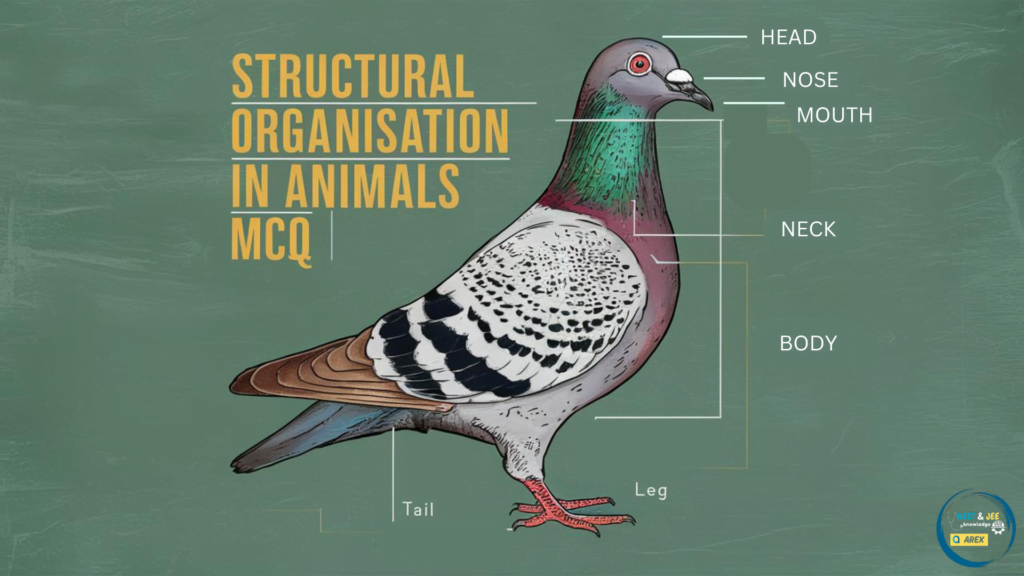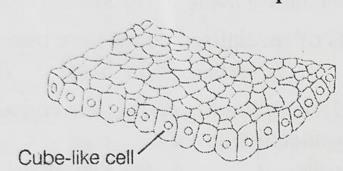
Structural Organization in Animals NEET Biology MCQ with Answers
The structural organization in animals starts at the cellular level and progresses to tissues, organs and organ systems. Cells are the basic units of life and similar cells group together to form tissues. There are four main types of tissues in animals: epithelial, connective, muscle and nervous tissues. Epithelial tissue covers the body and lines organs and cavities, while connective tissue provides support and binds other tissues. Muscle tissue is responsible for movement and nervous tissue transmits signals throughout the body.
These tissues combine to form organs, which are specialized structures that perform specific functions. For example, the stomach is an organ that aids in digestion. Multiple organs work together to form organ systems, such as the digestive system, which includes the mouth, esophagus, stomach and intestines. Understanding the structural organization of animals is important for NEET students as it forms the foundation for comprehending more complex biological processes and systems.
| NEET 2025 Exam Important Links | |
|---|---|
| NEET 2025 Updated Syllabus | NEET Eligibility Criteria 2025 |
| Biology Preparation | Chemistry NEET Preparation |
| NEET Preparation tips for 2025 | NEET Result 2024 |
Structural Organization in Animals NEET Biology MCQ
Understanding the structural organization in animals is important for NEET aspirants as it forms the foundation of anatomy and physiology. This topic covers the hierarchical organization from cells to tissues, organs and organ systems. A clear grasp of these concepts is essential for comprehending more complex biological processes and how different parts of the body function and interact.
Moreover, the NEET syllabus places significant emphasis on the structural organization because it is integral to understanding human biology, which is a major component of medical studies. Topics such as epithelial tissue, connective tissue, muscle tissue, and nervous tissue are frequently tested.
MCQs
Thus, the endothelium of blood vessels is made up of simple squamous epithelium.
Other pairs are incorrect and can be corrected as
Inner lining of salivary ducts is lined by compound epithelium.
Moist surface of buccal cavity is lined by compound epithelium.
Inner surface of bronchioles is lined by ciliated epithelium.

Enhance your preparation with Arexiq’s Mock Test Series where we provide solutions to various MCQs like we provide in this post “Structural Organization in Animals NEET Biology MCQ”. Our expert teachers explain the concepts thoroughly, making it easy for you to understand. We offer many types of questions ensuring a clear grasp of concepts.
FAQs about Structural Organisation in Animals
Q1: What are the four main types of tissues in animals?
Answer: The four main types of tissues in animals are epithelial, connective, muscle and nervous tissues.
Q2: How do tissues form organs?
Answer: Similar tissues group together to form organs, which are specialized structures performing specific functions.
Q3: Can you give an example of an organ system?
Answer: Yes, the digestive system is an example. It includes organs like the mouth, esophagus, stomach and intestines.
Q4: Why is understanding structural organization important for NEET?
Answer: It is important because it forms the foundation for understanding complex biological processes and systems.
Q5: What is the basic unit of life in animals?
Answer: The cell is the basic unit of life in animals.


